Study on Beat Vibration of a High Temperature Superconducting EDS Maglev Vehicle at Low Speed
Abstract
1. Introduction
2. Governing Equations
2.1. Definition of Two Coordinate Systems
2.2. Dynamic Equations of the Vehicle
2.3. Levitation Force Based on Dynamic Circuitry Theory

3. Theory Vertical Equilibrium Point
4. Multi-Body Dynamic Model of the EDS Vehicle
- (1)
- Decoupling of Levitation forces
- (2)
- Model elements in multi-body dynamic model
- (3)
- Simulation conditions
- (4)
- Solver setting
5. Results and Discussion
5.1. Simulation Results
5.2. Vertical Displacement and Pitch Angle Performance under Different Conditions
- (1)
- The mean value of the vertical displacement , which indicates that the vertical balance point is defined as:
- (2)
- The amplitude of the vertical displacement is defined as:
- (3)
- The mean value of the pitch angle of the vehicle , which indicates that the mean pitch angle is defined as:
- (4)
- The amplitude of the pitch angle of the vehicle is defined as
- (1)
- Influence of initial vertical displacement
- (2)
- Influence of velocity of vehicle
- (3)
- Influence of MMF of SCM
6. Conclusions
Author Contributions
Funding
Institutional Review Board Statement
Informed Consent Statement
Data Availability Statement
Acknowledgments
Conflicts of Interest
References
- Guo, Z.; Zhou, D.; Chen, Q.; Yu, P.; Li, J. Design and Analysis of a Plate Type Electrodynamic Suspension Structure for Ground High Speed Systems. Symmetry 2019, 11, 1117. [Google Scholar] [CrossRef]
- Guo, Z.; Li, J.; Zhou, D. Study of a Null-Flux Coil Electrodynamic Suspension Structure for Evacuated Tube Transportation. Symmetry 2019, 11, 1239. [Google Scholar] [CrossRef]
- Wang, J.S.; Wang, S.Y.; Zeng, Y.W.; Deng, C.Y.; Ren, Z.Y.; Wang, X.R.; Song, H.H.; Zheng, J.; Zhao, Y.; Wang, X.Z. The present status of the high temperature superconducting Maglev vehicle in China. Supercond. Sci. Technol. 2005, 18, S215–S218. [Google Scholar] [CrossRef]
- Bernstein, P.; Noudem, J. Superconducting magnetic levitation: Principle, materials, physics and models. Supercond. Sci. Technol. 2020, 33, 033001. [Google Scholar] [CrossRef]
- Wen, Y.; Xin, Y.; Hong, W.; Zhao, C.; Li, W. Comparative study between electromagnet and permanent magnet rails for HTS maglev. Supercond. Sci. Technol. 2020, 33, 035011. [Google Scholar] [CrossRef]
- Kim, M.; Jeong, J.-H.; Lim, J.; Kim, C.-H.; Won, M. Design and Control of Levitation and Guidance Systems for a Semi-High-Speed Maglev Train. J. Electr. Eng. Technol. 2017, 12, 117–125. [Google Scholar] [CrossRef]
- Powell, J.R.; Danby, G.R. High-Speed Transport by Magnetically Suspended Trains. In Proceedings of the ASME Winter Annual Meeting, 66-WA/RR-5, Railroad Division, New York, NY, USA, 14 November 1966. [Google Scholar]
- Sawada, K. Development of magnetically levitated high speed transport system in Japan. IEEE Trans. Magn. 1996, 32, 2230–2235. [Google Scholar] [CrossRef]
- Ohashi, S.; Ohsaki, H.; Masada, E. Equivalent model of the side wall electrodynamic suspension system. Electr. Eng. Jpn. 1998, 124, 63–73. [Google Scholar] [CrossRef]
- Ohashi, S.; Ohsaki, H.; Masada, E. Effect of the active damper coil system on the lateral displacement of the magnetically levitated bogie. IEEE Trans. Magn. 1999, 35, 4001–4003. [Google Scholar] [CrossRef]
- Takeuchi, T.; Shin, E.; Ohashi, S.; Okubo, T. Improvement of the Damping Factor by the Weight Reduction Damper Coil in Superconducting Magnetically Levitated Bogie. In Proceedings of the 11th International Symposium on Linear Drives for Industry Applications (LDIA), Osaka, Japan, 6–8 September 2017. [Google Scholar]
- Edilson, H.T.; Junior, J.S.; Dynamic Interactions between Maglev Vehicle and Elevated Guideway. SAE Paper 952283. 1995. Available online: https://saemobilus.sae.org/content/952283/ (accessed on 5 December 2022).
- Yan, Z.; Ma, G.; Zhang, W.; Cai, Y.; Zeng, J.; Yao, C.; Song, X.; Jiang, J.; Wang, Y. Dynamic Response of a Superconducting EDS Train with Vehicle/Guideway Coupled Dynamics. IEEE Trans. Appl. Supercond. 2020, 30, 1–5. [Google Scholar] [CrossRef]
- Yan, Z.; Zeng, J.; Zhang, W.; Feng, P.; Li, Y.; Yao, C.; Ma, G. Dynamic Simulation of Vibration Characteristics and Ride Quality of Superconducting EDS Train Considering Body with Flexibility. IEEE Trans. Appl. Supercond. 2021, 31, 1–5. [Google Scholar] [CrossRef]
- Ohashi, S.; Ueda, N. Dependence of the Quenched SC Coil Position on the Transient Motion of the Superconducting Magnetically Levitated Bogie. IEEE Trans. Appl. Supercond. 2016, 26, 1–4. [Google Scholar] [CrossRef]
- Ohashi, S.; Ohsaki, H.; Masada, E. Running Characteristics of the superconducting magnetically levitated train in the case of superconducting coil quenching. Electr. Eng. Jpn. 2000, 130, 937–946. [Google Scholar] [CrossRef]
- Seino, H.; Miyamoto, S. Long-term Durability and Special Running Tests on the Yamanashi Maglev Test Line. Q. Rep. RTRI 2006, 47, 1–5. [Google Scholar] [CrossRef]
- Chen, D.; Li, X.-F.; Wu, W.; Sheng, J.; Hong, Z.; Jin, Z.; Ma, H.; Zhao, T. A Three-dimensional Numerical Model for Evaluation of Eddy Current Effects on Electromagnetic Forces of HTS Electrodynamic Suspension System. Phys. C Supercond. Appl. 2022, 594, 1354009. [Google Scholar] [CrossRef]
- Chen, D.; Li, X.-F.; Huang, X.; Sheng, J.; Wu, W.; Hong, Z.; Jin, Z.; Ma, H.; Zhao, T. An FEM Model for Evaluation of Force Performance of High-Temperature Superconducting Null-Flux Electrodynamic Maglev System. IEEE Trans. Appl. Supercond. 2021, 31, 3603806. [Google Scholar] [CrossRef]
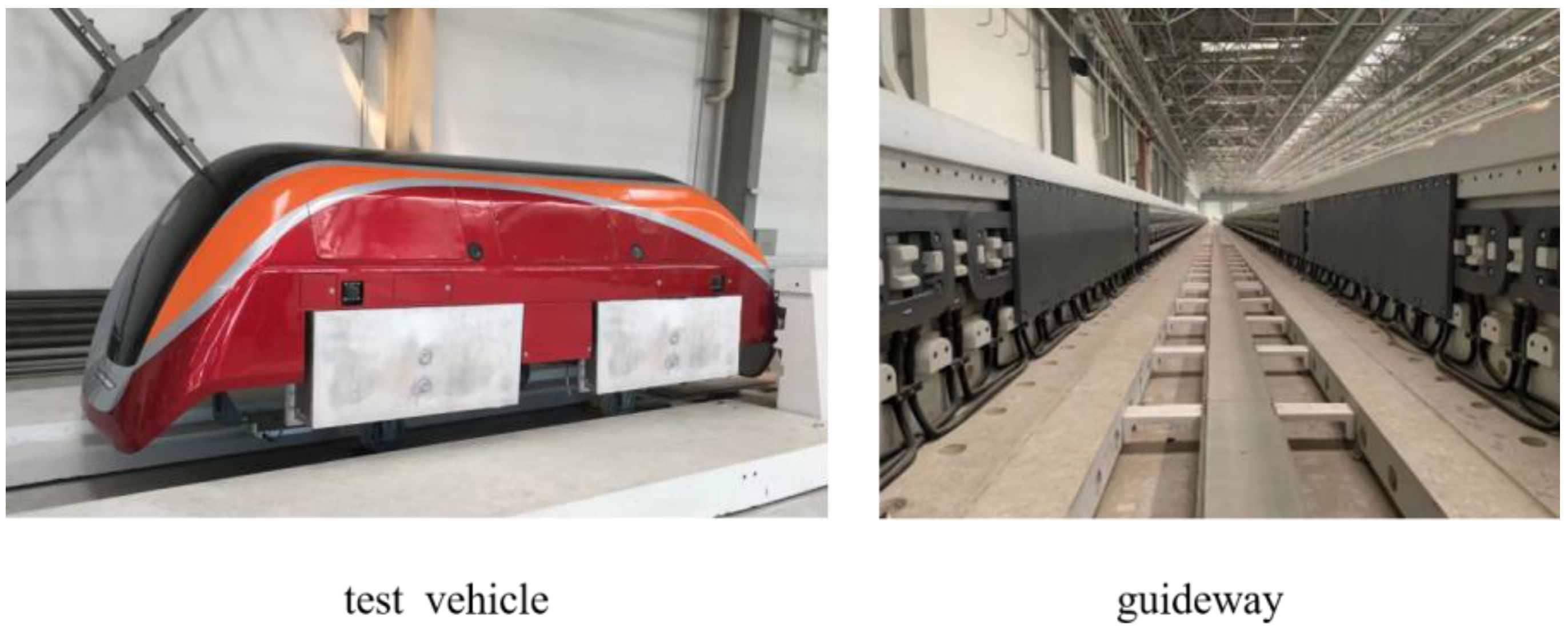
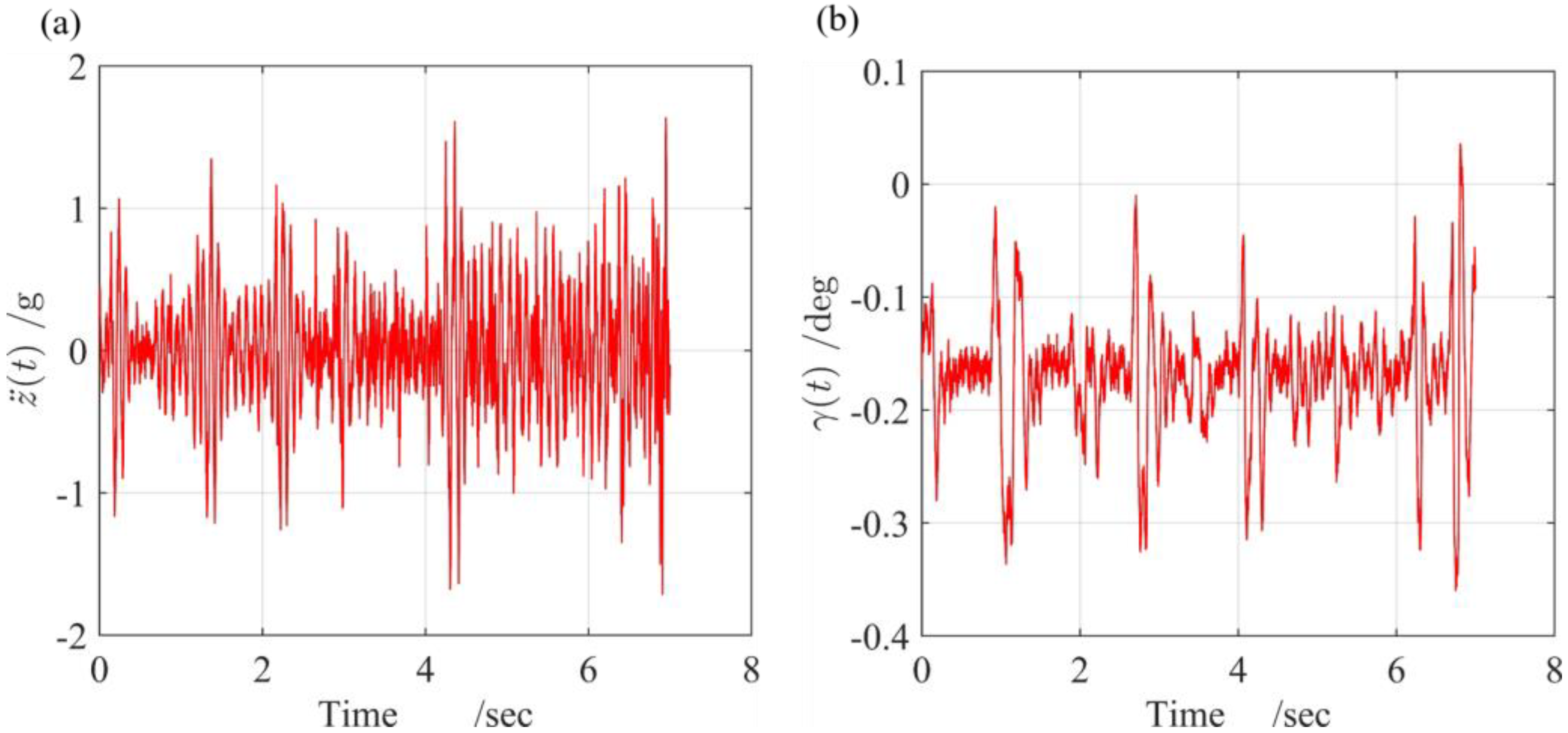
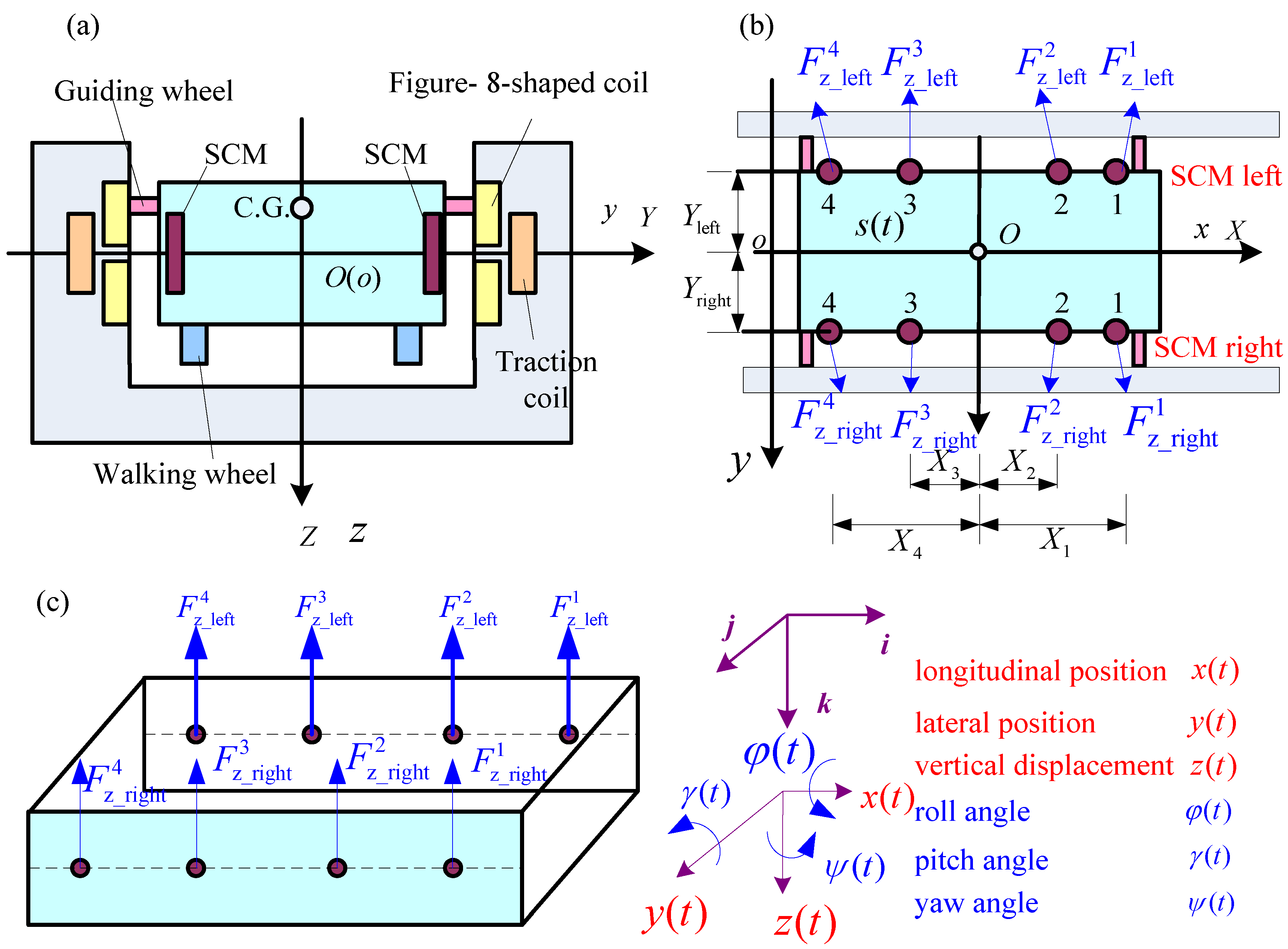
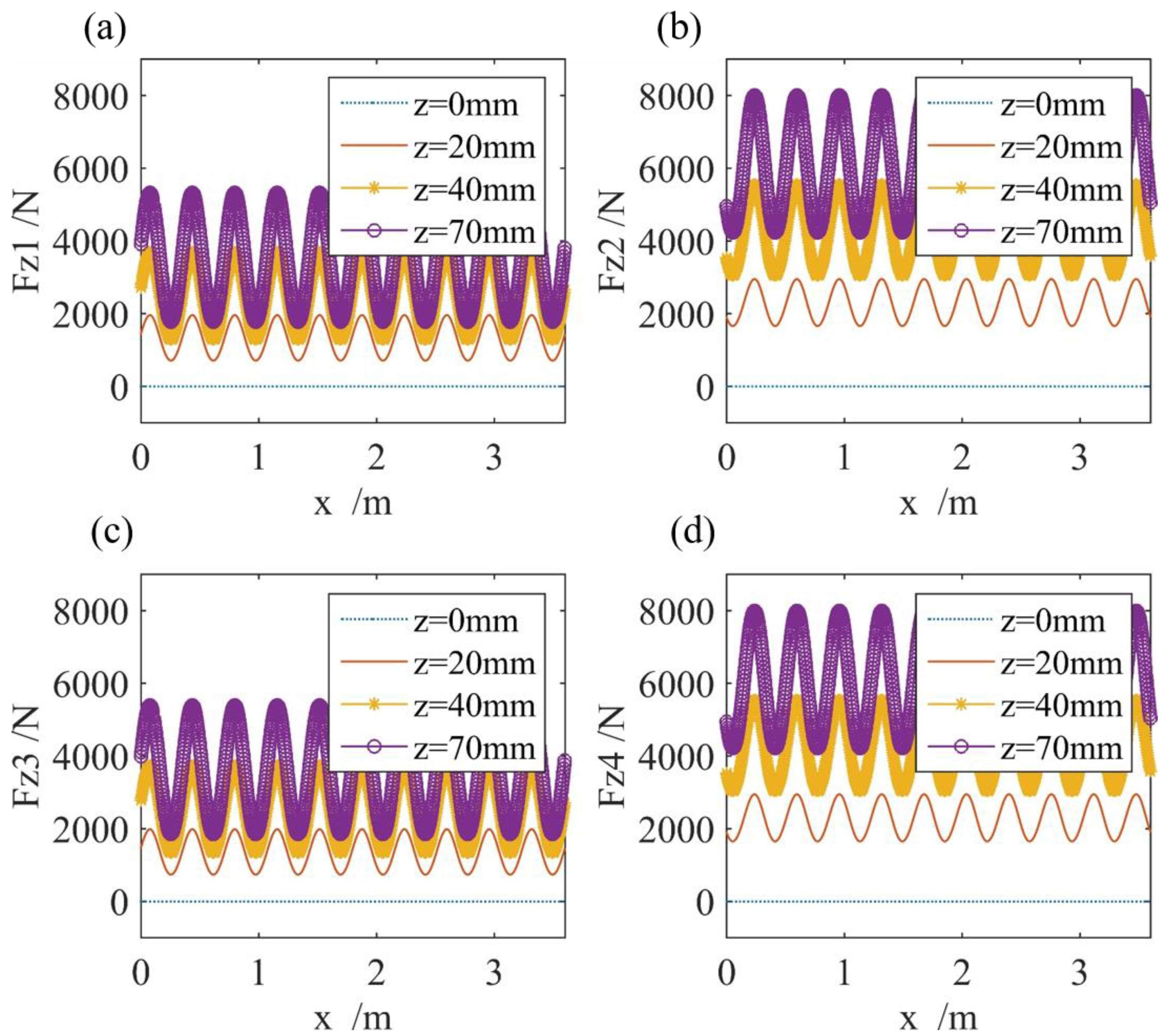
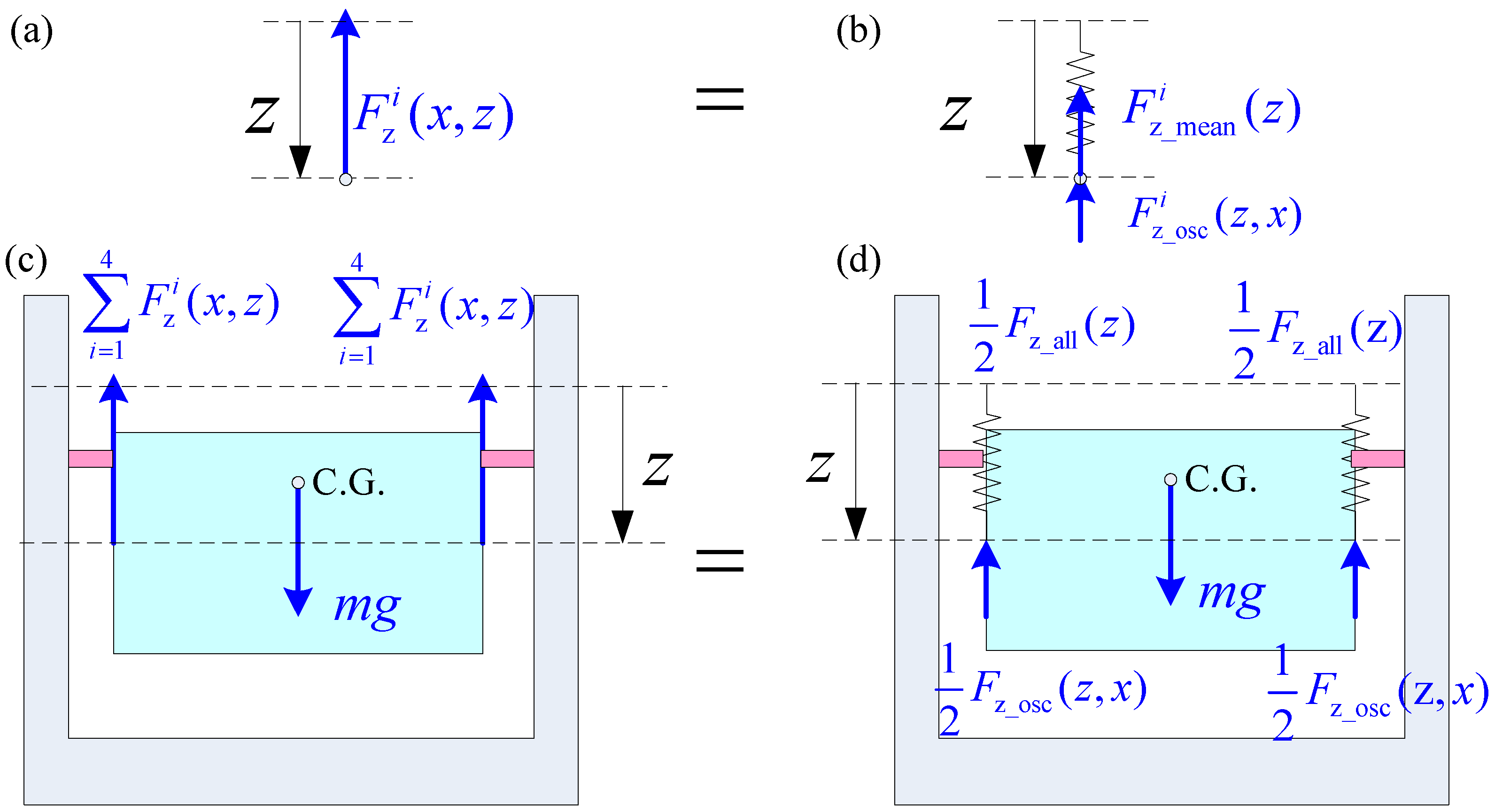
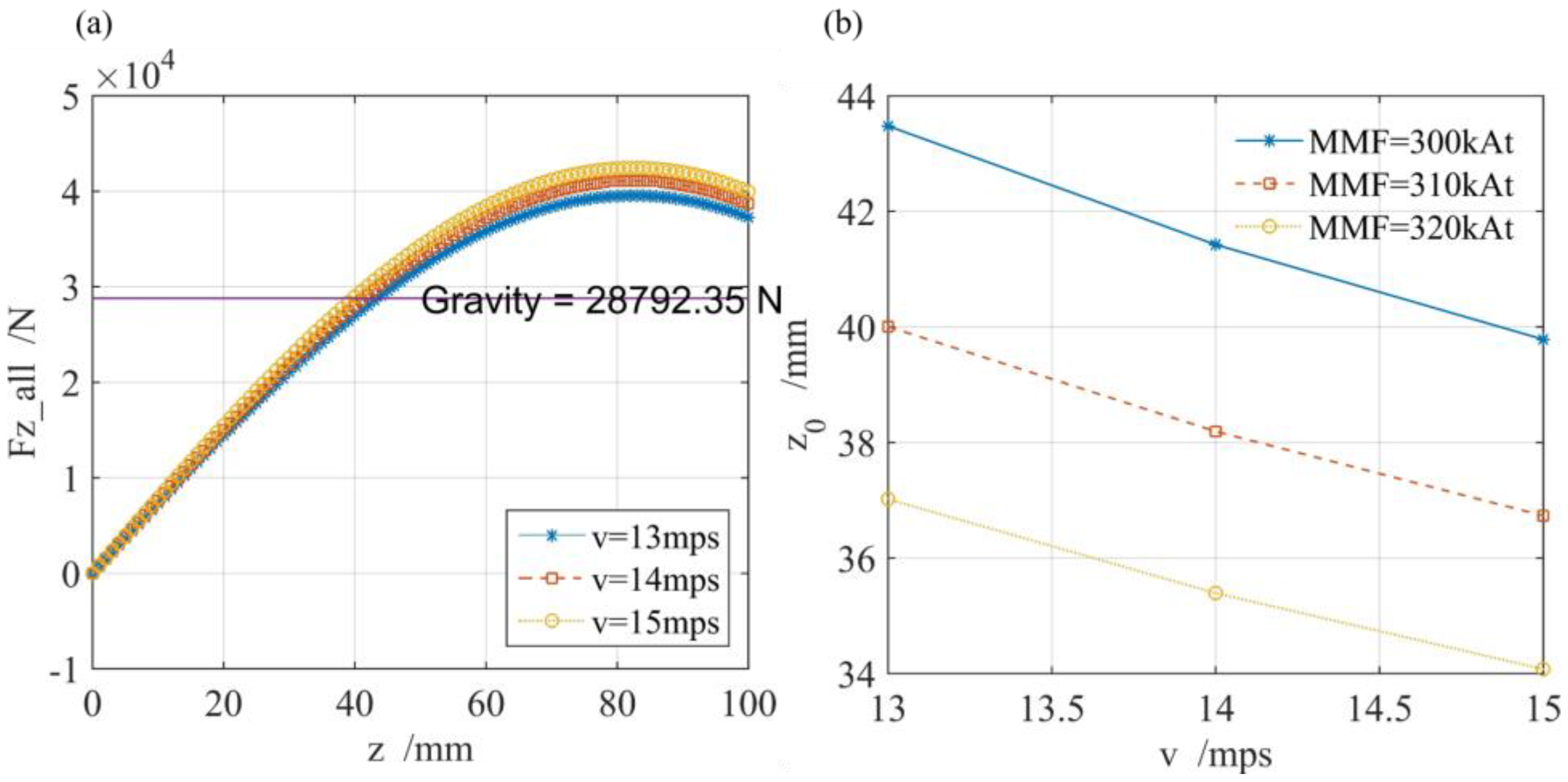
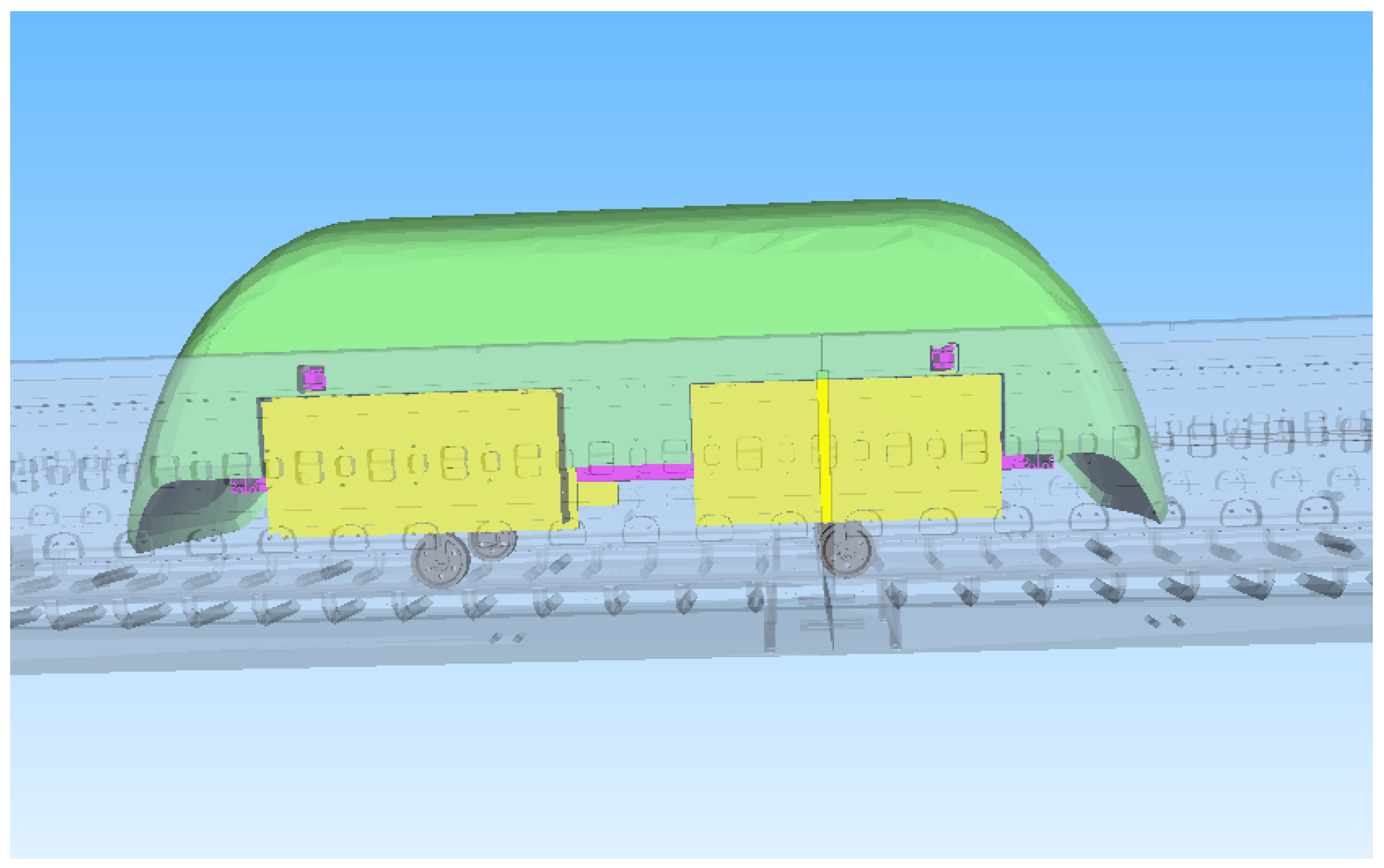
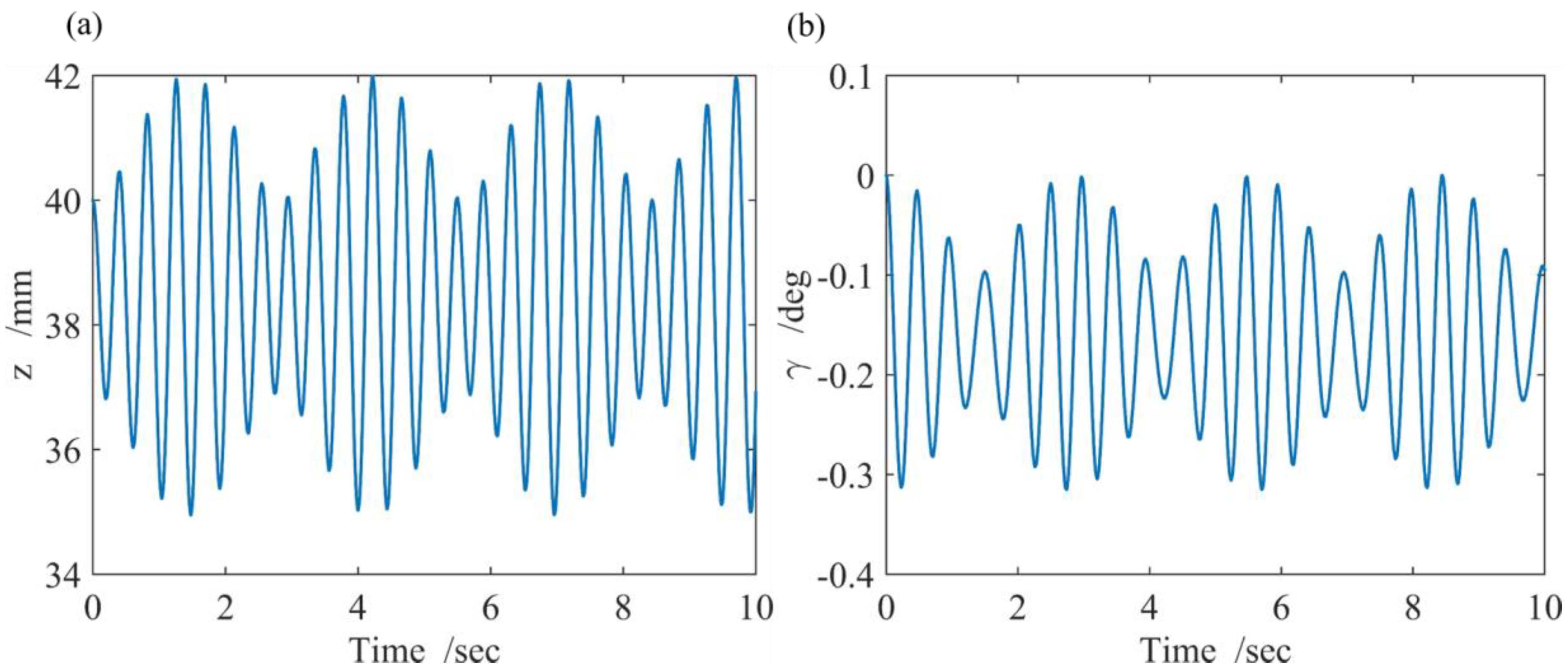
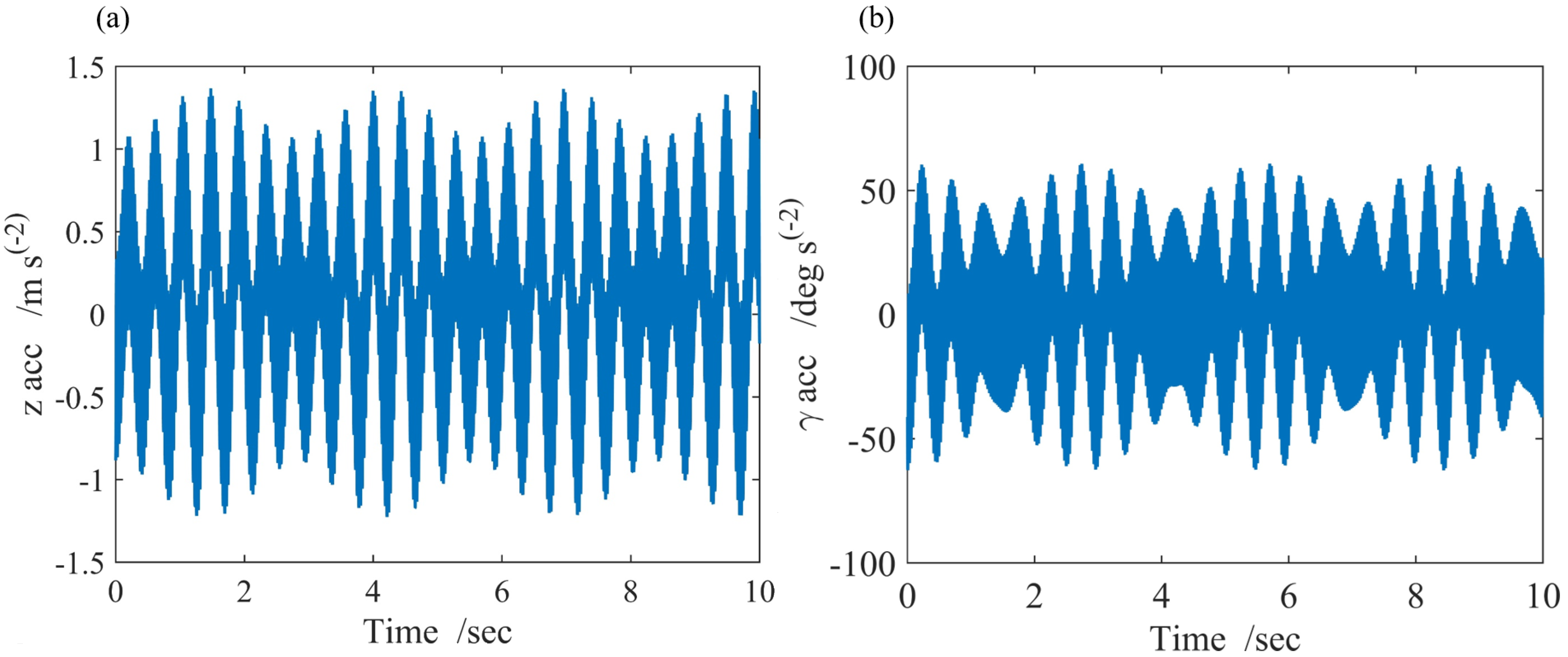

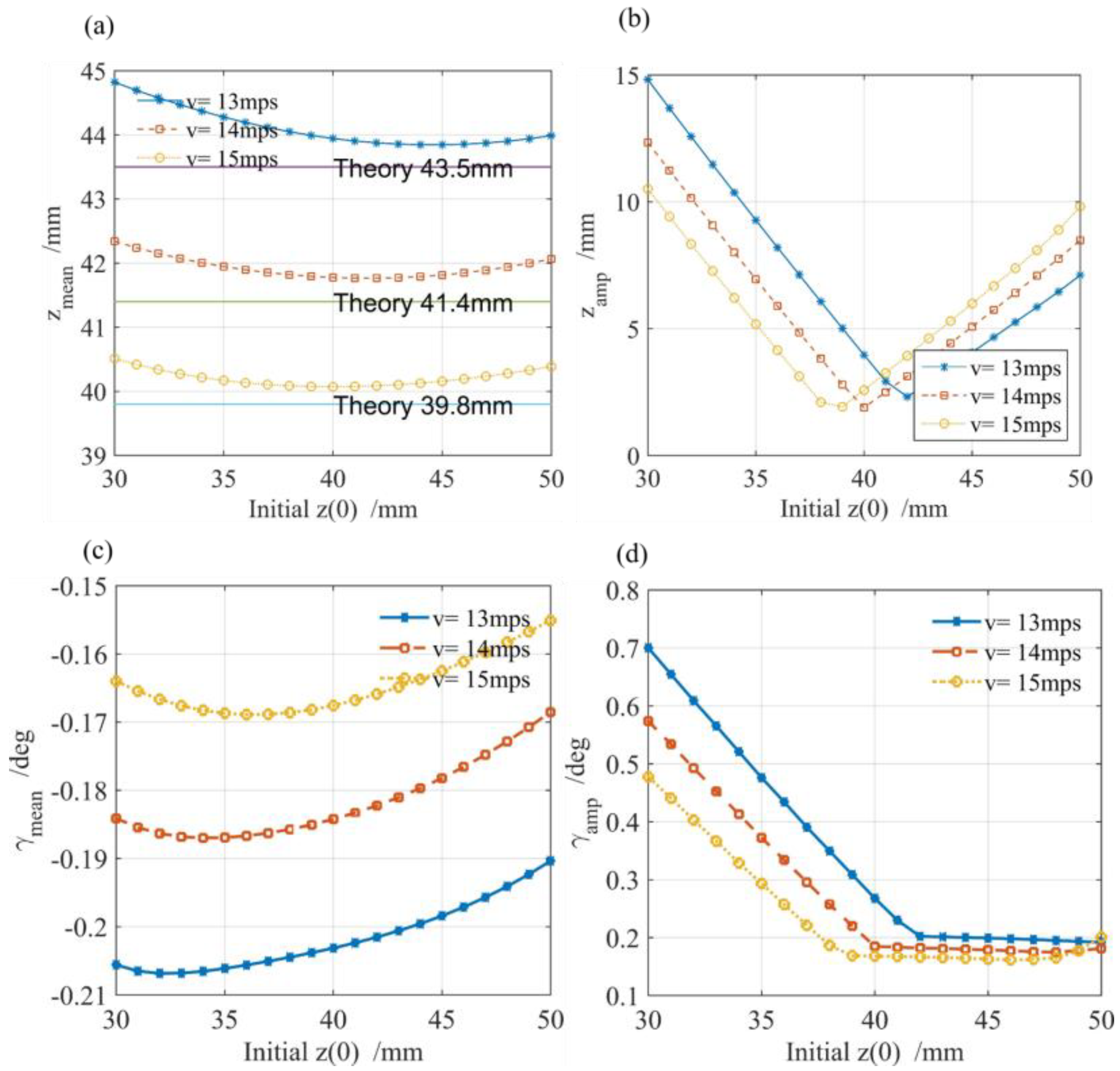
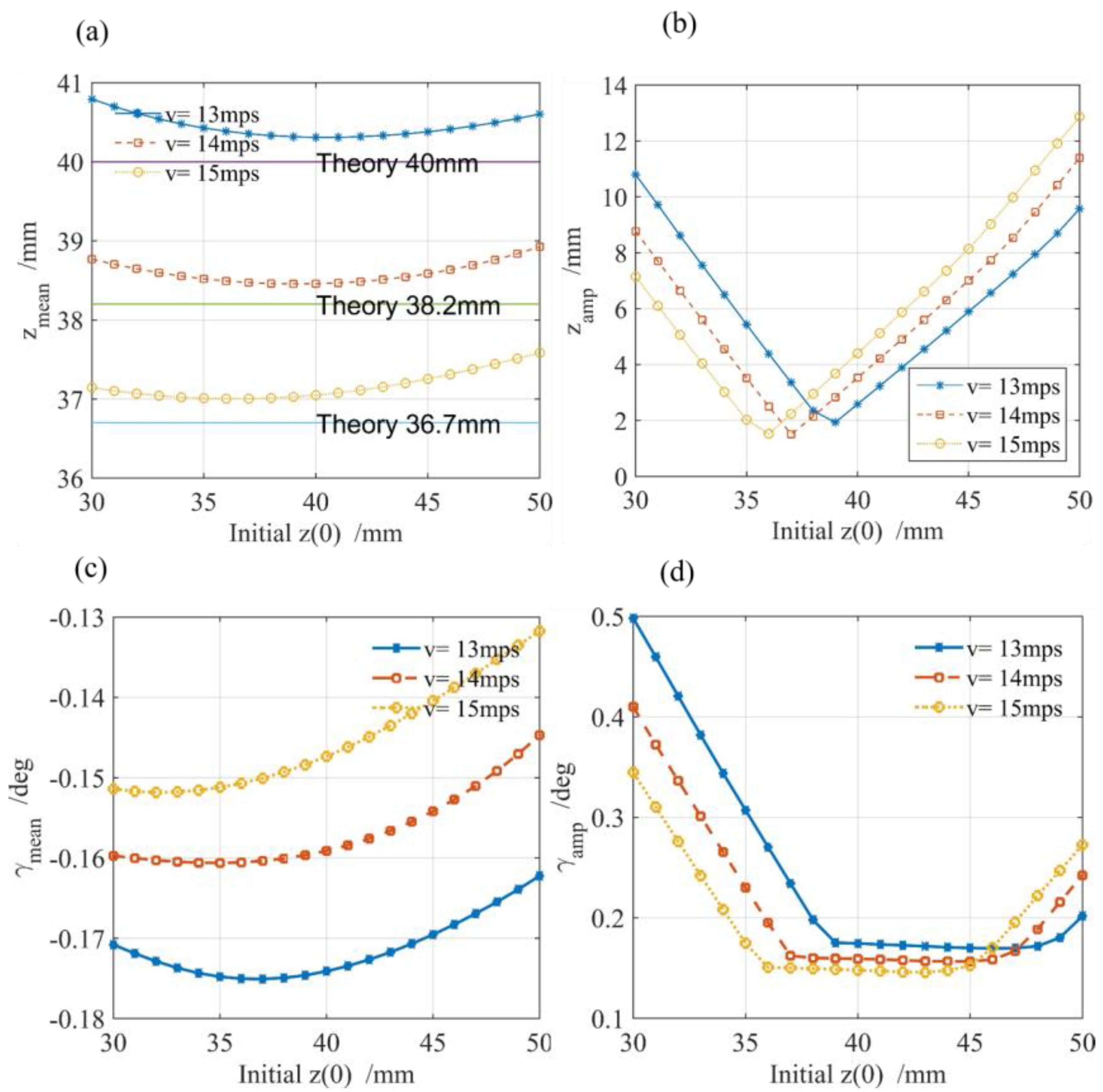

| Mass m/kg | Moment of Inertia | Moment of Inertia | Moment of Inertia |
|---|---|---|---|
| 2935 | 2536 | 4581 | 6353 |
| Scheme | /m | /m | /m |
|---|---|---|---|
| 1st left SCM | 1.35 | −1.033 | 0 |
| 2nd left SCM | 0.81 | −1.033 | 0 |
| 3rd left SCM | −0.81. | −1.033 | 0 |
| 4th left SCM | 1.35 | −1.033 | 0 |
| 1st right SCM | 1.35 | 1.033 | 0 |
| 2nd right SCM | 0.81 | 1.033 | 0 |
| 3rd right SCM | −0.81 | 1.033 | 0 |
| 4th right SCM | −1.35 | 1.033 | 0 |
| Factor | Value | Description |
|---|---|---|
| Initial vertical displacement, level number is 21. | ||
| Velocity of vehicle, level number is 3. | ||
| MMF of SCM onboard, level number is 3. |
Disclaimer/Publisher’s Note: The statements, opinions and data contained in all publications are solely those of the individual author(s) and contributor(s) and not of MDPI and/or the editor(s). MDPI and/or the editor(s) disclaim responsibility for any injury to people or property resulting from any ideas, methods, instructions or products referred to in the content. |
© 2023 by the authors. Licensee MDPI, Basel, Switzerland. This article is an open access article distributed under the terms and conditions of the Creative Commons Attribution (CC BY) license (https://creativecommons.org/licenses/by/4.0/).
Share and Cite
Yu, Q.-S.; Wang, M.; Yao, G.-F.; Zhang, S.-X.; Yang, J.; Shao, N. Study on Beat Vibration of a High Temperature Superconducting EDS Maglev Vehicle at Low Speed. Appl. Sci. 2023, 13, 3131. https://doi.org/10.3390/app13053131
Yu Q-S, Wang M, Yao G-F, Zhang S-X, Yang J, Shao N. Study on Beat Vibration of a High Temperature Superconducting EDS Maglev Vehicle at Low Speed. Applied Sciences. 2023; 13(5):3131. https://doi.org/10.3390/app13053131
Chicago/Turabian StyleYu, Qing-Song, Min Wang, Guo-Feng Yao, Shi-Xuan Zhang, Jing Yang, and Nan Shao. 2023. "Study on Beat Vibration of a High Temperature Superconducting EDS Maglev Vehicle at Low Speed" Applied Sciences 13, no. 5: 3131. https://doi.org/10.3390/app13053131
APA StyleYu, Q.-S., Wang, M., Yao, G.-F., Zhang, S.-X., Yang, J., & Shao, N. (2023). Study on Beat Vibration of a High Temperature Superconducting EDS Maglev Vehicle at Low Speed. Applied Sciences, 13(5), 3131. https://doi.org/10.3390/app13053131





